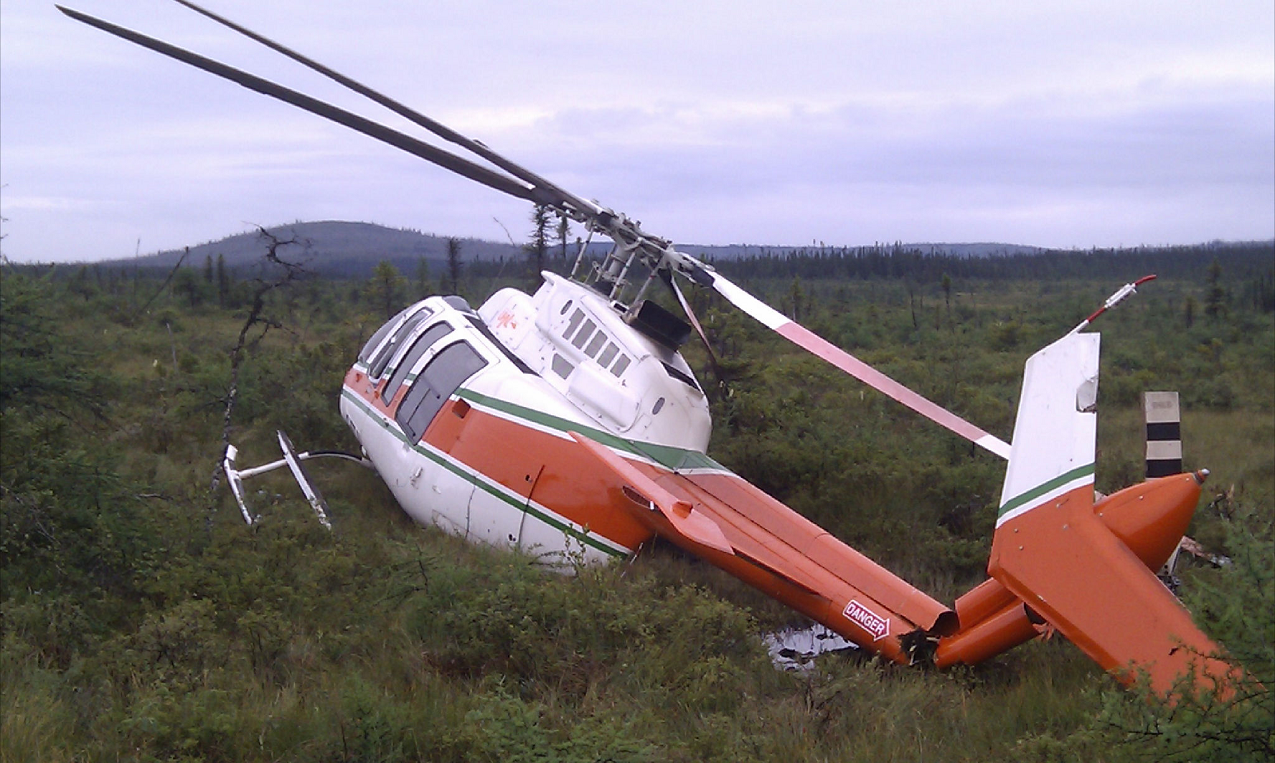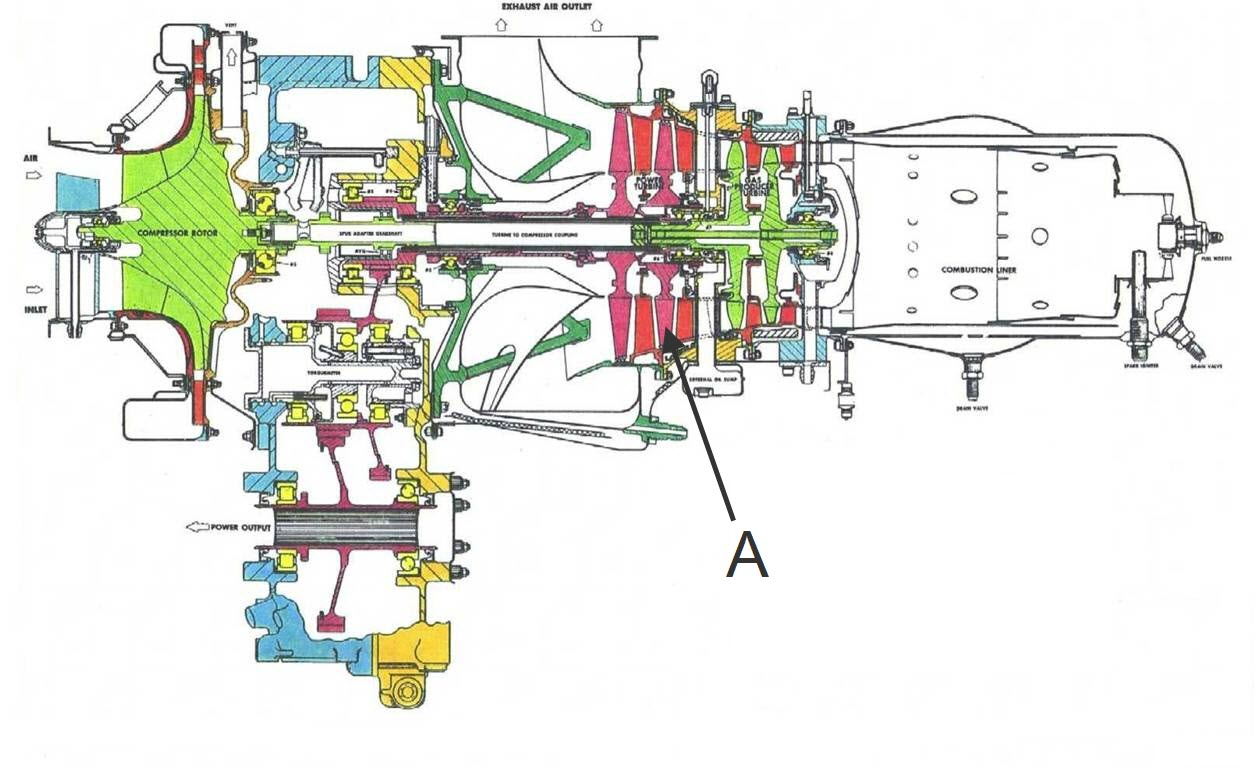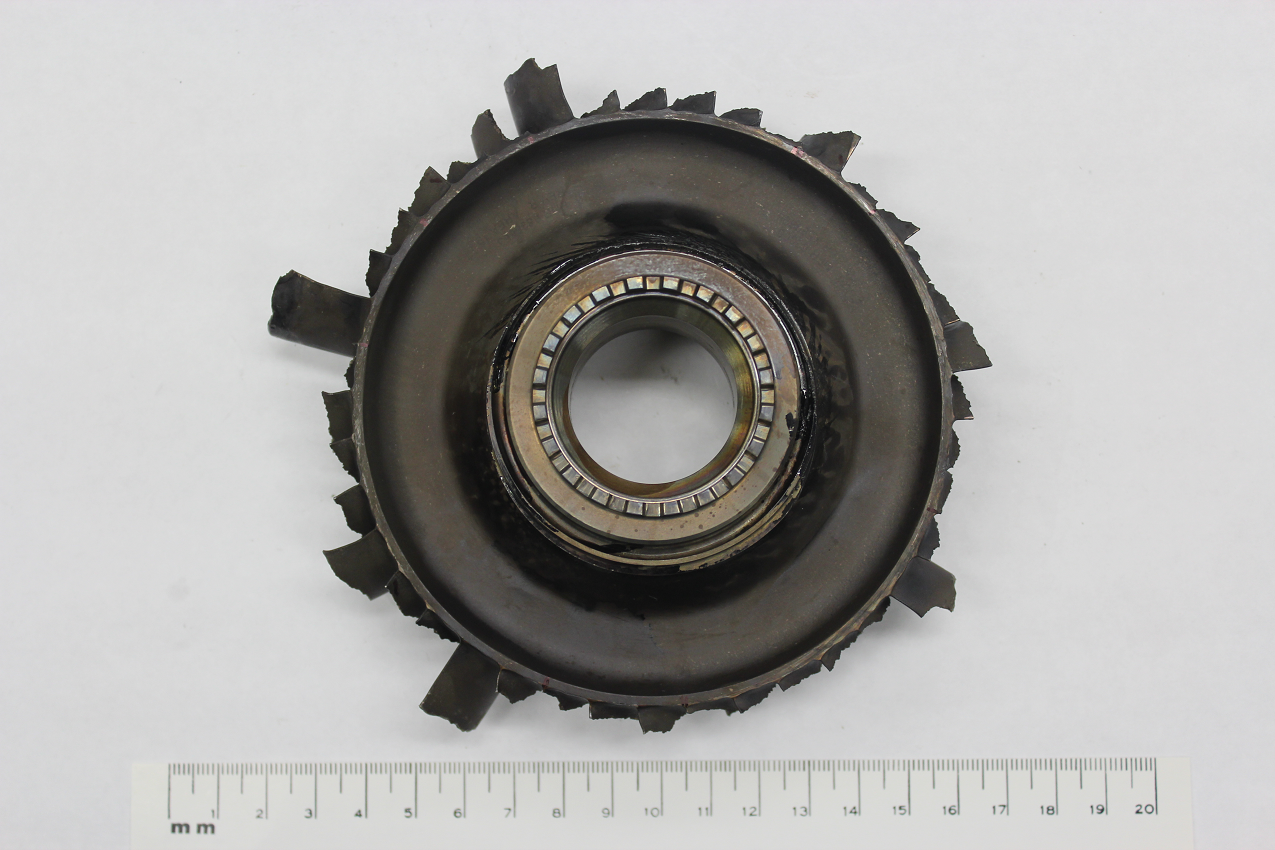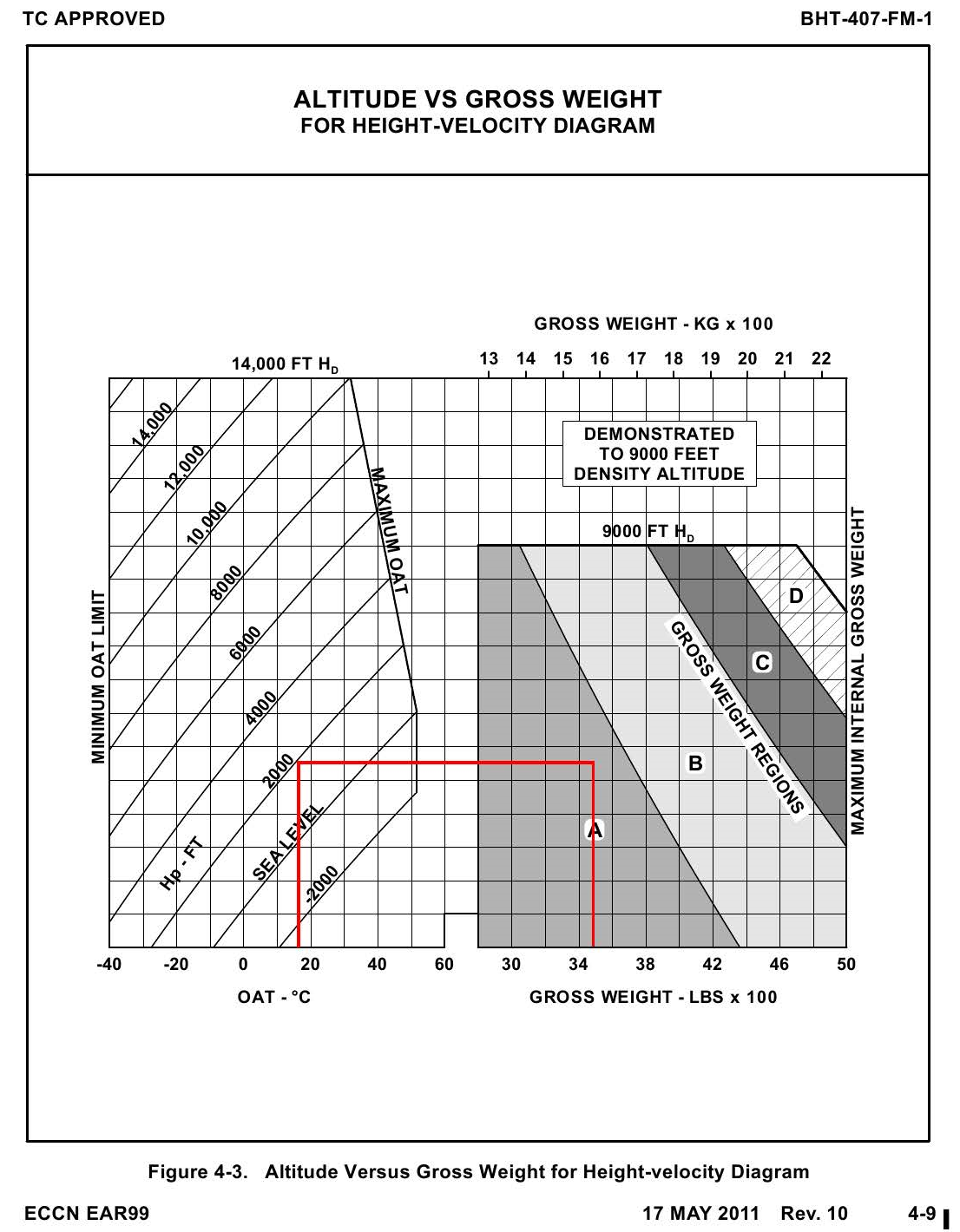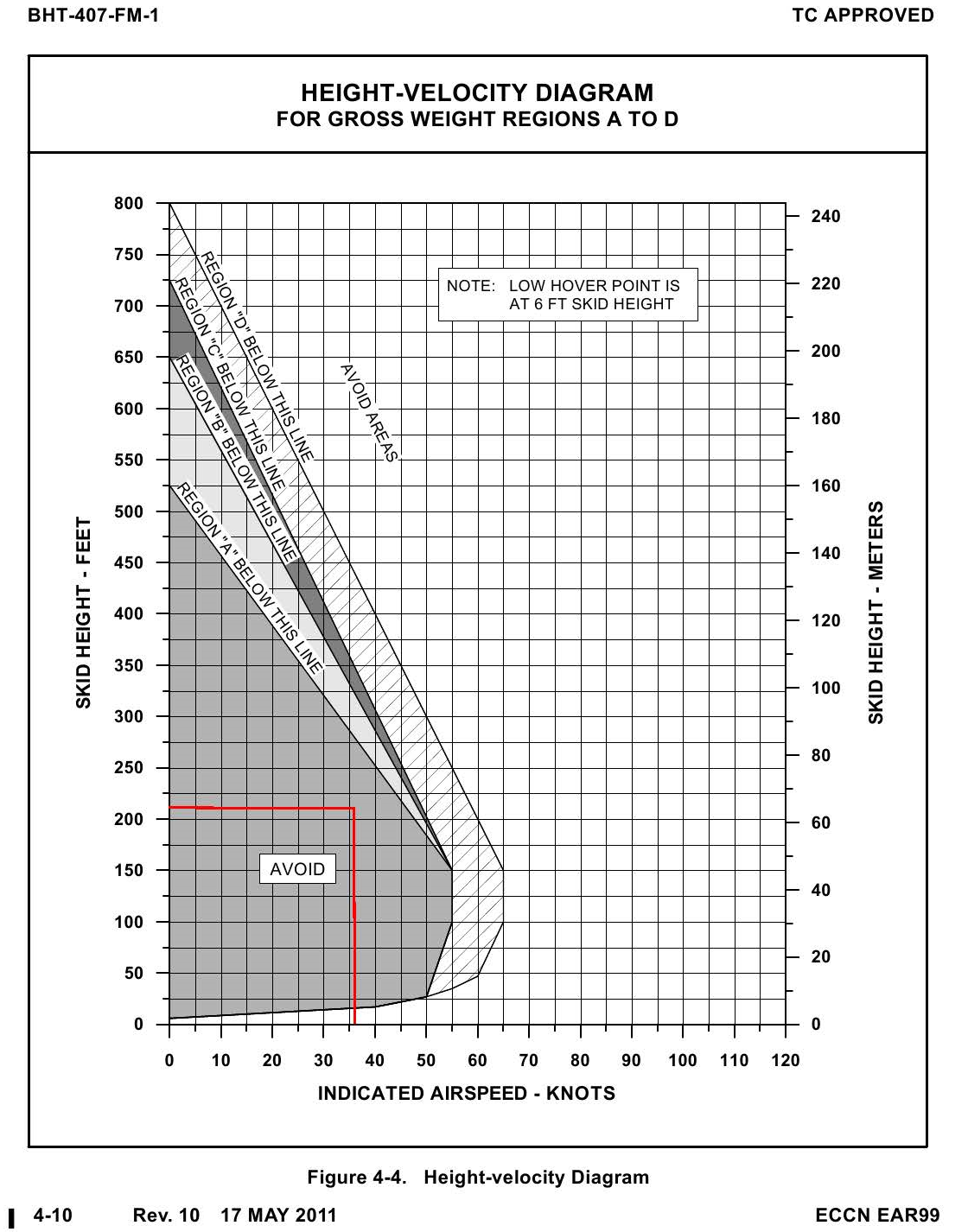Engine failure and hard landing
Universal Helicopters Newfoundland Limited
Bell 407 (Helicopter), C-FTJU
Wabush, Newfoundland and Labrador, 4 nm SW
The Transportation Safety Board of Canada (TSB) investigated this occurrence for the purpose of advancing transportation safety. It is not the function of the Board to assign fault or determine civil or criminal liability. This report is not created for use in the context of legal, disciplinary or other proceedings. See Ownership and use of content. Masculine pronouns and position titles may be used to signify all genders to comply with the Canadian Transportation Accident Investigation and Safety Board Act (S.C. 1989, c. 3).
Summary
The Universal Helicopters Newfoundland Limited Bell 407 helicopter (serial number 53331, registration C-FTJU) was slinging a drill tower approximately 4 nautical miles southwest of Wabush, Newfoundland and Labrador. While approaching the drill base frame, the helicopter lost engine power, then immediately descended and yawed to the left. The pilot released the drill tower before the helicopter struck the terrain. The pilot, who was the sole occupant, sustained minor injuries and was able to exit the aircraft. The helicopter was substantially damaged, and the 406-megahertz emergency locator transmitter activated as a result of the impact. There was no post-crash fire. The accident occurred in daylight hours at 1300 Atlantic Daylight Time.
Factual information
History of the flight
The helicopter was conducting multiple slinging operations,Footnote 1 beginning at approximately 0917.Footnote 2 At about 1300, the helicopter picked up the 2300-pound drill tower using a 90-foot long-line. As the helicopter approached the drill base, at approximately 220 feet above ground level and 36 knots indicated airspeed, there was a loud bang and a puff of smoke from the engine exhaust. This event was accompanied by an immediate loss of engine power and a rapid and continuous drop in main rotor speed (NR). The helicopter immediately yawed to the left and continued in a left turn while descending rapidly. Collective position was maintained for approximately 4 seconds, and then the pilot fully raised the collective. The helicopter collided with terrain about 9 seconds after the power loss.
The helicopter remained upright (Photo 1), and the main rotor stopped rotating. About 17 seconds after impact, the pilot completed the engine shutdown checks, then selected electrical power off.
The weather at the time of the occurrence was suitable for visual flight rules and was not considered a factor in this occurrence.
Pilot
The pilot held a commercial pilot licence endorsed for helicopters. The pilot had accumulated approximately 12 000 total flight hours; about 9500 were on rotary-wing aircraft. The pilot had approximately 2500 total flight hours on the Bell Helicopters Textron (Bell) 407.
The pilot's most recent Bell 407 pilot training was completed 30 January 2012. This training included a simulated engine failure while slinging a load.
Records indicate that the pilot was certified and qualified for the flight in accordance with existing regulations. There was no indication that fatigue, incapacitation, or physiological factors affected the pilot's performance.
Aircraft
The Bell 407 helicopter is designed to carry a pilot and 6 passengers. The Bell 407 is powered by a single Rolls-Royce Corporation (RRC) Model 250-C47B turbine engine, equipped with a full-authority digital electronic control (FADEC) engine control unit, which monitors and controls numerous engine parameters.
The investigation determined that the helicopter's weight and center of gravity were within the prescribed limits during the slinging operation and after the load was released.Footnote 3
Records indicate that the aircraft was certified, equipped, and maintained in accordance with existing regulations and approved procedures, and that there were no known deficiencies before the occurrence flight.
Damage information
The high-skid landing gear was deformed, a portion of the lower fuselage was crushed, and the tailboom was separated aft of the horizontal stabilizer. One main rotor blade was buckled mid-span. The other 3 main rotor blades and both tail rotor blades were relatively undamaged, consistent with low rotor revolutions per minute at impact. The engine exhaust duct had several holes made by portions of turbine assembly as they exited the engine.
The pilot was wearing the installed 4-point restraint. The pilot had a flight helmet,Footnote 4 but chose not to wear it during long-line operations.Footnote 5 The pilot did not sustain injury to the head.
The wreckage was transported to the company's base at Goose Bay, Newfoundland and Labrador. The engine (serial number CAE-848030) was removed in the presence of a Transportation Safety Board (TSB) investigator and shipped to the TSB Laboratory in Ottawa for examination.
Engine
The engine is a reverse-airflow modular-type turboshaft free turbine engine. It consists of a compressor, a gearbox, a turbine assembly, and a combustion chamber. The turbine assembly consists of a 2-stage gas producer turbine that drives the compressor, and a 2-stage power turbine that drives the rotor systems through the gearbox (Figure 1).
The occurrence helicopter's turbine assembly (serial number CAT-45473) had accumulated 1005.2 hours and 1402 cycles since new. During this time, the engine was operated within prescribed limitations.
The engine examination revealed that all 40 airfoils (blades) of the third-stage power turbine wheel, part number (P/N) 6898663, were separated, most near the hub (Figure 1 and Photo 2). Examination of the fracture surfaces found that several blades had a flat, relatively smooth region at the trailing edge, indicating progressive cracking.
Metallurgical and scanning electron microscope examination of the third-stage power turbine wheel identified high-cycle fatigue (HCF) striations on 6 blades, initiating at the trailing-edge tip of the blade close to the hub and propagating toward the leading edge. One of these blades had a HCF crack, which had propagated about 0.40 inch before it separated in overstress. The failure of the first blade led to a rapid failure of the turbine wheel as the remaining blades separated in overstress due to impact with blade fragments.
It was noted that the HCF cracked blades were located in a pattern around the turbine wheel. This pattern corresponds to a known third-mode vibration in a family of second diametral pattern modes (referred to as the 2D-3 mode). The 2D-3 mode pattern occurs in the 68.4% to 87.1% power turbine speed (N2) range.Footnote 6
According to RRC, certain operational conditions (particularly temperature exceedances during start-up and shutdown) can create large temperature differentials in the hub trailing-edge area of the blades. This effect can induce tensile residual stresses,Footnote 7 which lower the threshold for the initiation of fatigue cracks at the trailing-edge tips. Operating within the 2D-3 mode exacerbates this condition. Once initiated, these cracks are then driven by the fatigue loading and propagate rapidly to failure.
Other than damage associated with the power turbine failure, no discrepancies were noted with the engine.
Turbine-wheel high-cycle fatigue blade failures
Since April 2002, there have been 8 other occurrences of HCF blade failure on the P/N 6898663 third-stage turbine wheel installed in the Model 250-C47B engines:Footnote 8
- 3 initiated at the trailing-edge tip of the blade close to the hub, and propagated toward the leading edgeFootnote 9 in the same manner as noted in this occurrence;
- 2 were undetermined;
- 2 initiated at the leading-edge mid-span of the blade; and
- 1 had both modes of failure.
RRC has determined that the leading-edge mid-span HCF blade failures are not associated with operating within the 68.4% to 87.1% N2 range.
At the time of this report, RRC has not been able to specifically identify what engine operating condition, or conditions, cause the tensile residual stresses to be induced at the blade hub trailing edges. Also, it is unknown what extended engine operations are being conducted in the 68.4% to 87.1% N2 range.
Engine N2 operating-range history
The P/N 6898663 third-stage power turbine wheel Model 250-C47B was originally released in the late 1970s, and RRC was aware that this wheel was subject to the 2D-3 mode pattern. However, RRC determined that there was no need to specify a speed avoidance range, because the 2D-3 mode pattern only occurs in an N2 range, where the engine does not normally operate in a steady-state condition.
Between 2001 and 2005, Bell worked with RRC to determine the cause of the third-stage turbine wheel failures. RRC determined that detrimental vibrations between 68% and 86% N2 may be a potential contributing factor to these failures.
In March 2004, Bell released Alert Service Bulletin (ASB) 407-04-64 which required compliance with RRC's Commercial Engine Bulletin (CEB) A-72-6050. This CEB required a one-time visual and nondestructive inspection of the third-stage power turbine wheel. In addition, Bell advised that it was in the process of revising the rotorcraft flight manual (RFM) for avoidance of steady-state N2 operation between 68.0% and 86.0%.
In April 2004, Transport Canada (TC) issued Airworthiness Directive (AD) CF-2004-09, which reiterated the steady-state N2 operation range to be avoided. Additionally, the AD indicated that Bell had revised the Bell 407 RFM and provided a decal to inform pilots to avoid steady-state operations at these power turbine speeds.
In March 2005, Bell released ASB 407-04-65, which identified the N2 steady-state avoidance range to be between 68.0% and 86.0%.
In June 2005, Bell released ASB 407-05-67, which cancelled ASB 407-04-65 and included RRC CEB A-72-6054. This CEB identified a new N2 steady-state avoidance range between 68.4% and 87.1%, and added new transient N2 overspeed excursion limits.Footnote 10 The Bell 407 RFM was revised to include the new steady-state avoidance range, and a placard showing this range was required to be fastened to the instrument panel.
In July 2005, TC issued AD CF-2004-09R1, which superseded CF-2004-09 and required compliance with Bell ASB 407-05-67. C-FTJU complied with AD CF-2004-09R1 on 03 August 2005.
Autorotation
During normal flight, the main rotor blades are producing lift and thrust from their angle of attack (AOA) and velocity. An autorotation is a state of flight in which the engine is disengaged from the main rotor system and the rotor blades are driven solely by the aerodynamic forces developed from the upward flow of air through the rotor. This upward flow of air through the rotor provides sufficient thrust to maintain NR throughout the descent. The pilot controls NR by adjusting the position of the collective lever.Footnote 11 The descent is arrested by raising the collective lever to increase the main rotor AOA and to use the inertia stored in the main rotor blades to again produce lift, allowing the aircraft to land safely or minimize an impact.
An autorotation is commenced by immediately lowering the collective lever so that lift and drag are reduced, NR is conserved, and the helicopter begins an immediate descent. If NR is not conserved and continues to decrease, the angle of attack of the main rotor blades will eventually increase to the point that they will begin to stall. If the blades enter a stall condition, lift will decrease and drag will increase, causing the helicopter's rate of descent to increase rapidly, which further exacerbates the stall condition. Therefore, it is critical that pilots avoid a main-rotor blade stall condition. If all of the rotor blades stall, it may be impossible to regain a safe rotor speed to carry out the remainder of the autorotation to landing. This event may result in a very high rate of descent just before touchdown, a rate which may not be possible to reduce to an acceptable level before touchdown, and could result in large impact forces.
The main purpose of the tail rotor is to counteract the torque effect of the main rotor. The tail rotor is controlled by the anti-torque pedals. When an engine failure occurs, a helicopter with a counter-clockwise rotating main rotor will instantly yaw to the left as engine torque is removed. To correct for this yaw, the pilot must immediately apply right pedal. If the yaw is not corrected, then the helicopter will continue to rotate to the left.
The Bell 407 RFM identifies that a left yaw, decreasing NR, and decreasing gas producer turbine speed are indications of an engine failure.Footnote 12 The engine failure procedure includes the requirement to adjust the collective lever to maintain NR between 85% and 107%.
Height-velocity diagram
The height-velocity diagram (HVD) is unique to helicopter operations.Footnote 13 For a single-engine helicopter, the HVD shows, in graph format, those combinations of airspeed and height above the ground where either a fully developed autorotation can be entered or a safe landing carried out after the helicopter suffers an engine power loss, and an “avoid” area where these are not possible.Footnote 14 The HVD identifies height and speed combinations within which to avoid or minimize flight. The HVD is not a limitation. It is a guide to show the flight profiles where pilots are exposed to higher risks resulting from engine power loss. Operational tasks, such as slinging, typically occur at low airspeed and altitudes associated with operation within the depicted HVD avoid range.
At the time of the engine power loss, the occurrence helicopter was about 2000 feet above sea level, and the outside air temperature was 17°C. According to the Bell 407 HVD, the occurrence helicopter was operating within the avoid region (Appendix A and Appendix B).
TSB Laboratory Reports
The following TSB Laboratory report was completed:
- LP187/2012 – Engine Examination
This report is available from the TSB upon request.
Analysis
This analysis will focus on the events, conditions, and underlying factors that led to the loss of power and hard landing.
The third-stage turbine wheel failed due to the overstress extension of high-cycle fatigue cracks in the blade trailing edges, in a manner consistent with a known pattern, resulting in a loss of engine power. Rolls-Royce Corporation (RRC) has not been able to specifically identify what engine operating condition, or conditions, cause the tensile residual stresses to be induced at the blade hub trailing edges. Also, it is unknown what extended engine operations are being conducted in the 68.4% to 87.1% power turbine speed (N2) range. As a result, there is a continued possibility of engine failure, in turn increasing the risk of injury and helicopter damage.
After the power loss occurred, the collective lever was not immediately lowered, and no action was taken to correct the left yaw. When the collective lever is not immediately lowered, main rotor speed (NR) may decrease to a point where loss of control of the helicopter may result. Additionally, anti-torque input must be applied to maintain directional control. The engine power loss occurred with the helicopter operating in the height-velocity diagram (HVD) “avoid” range, and it cannot be determined whether immediate action to maintain NR and directional control would have reduced injury or helicopter damage. When there is a delay in carrying out the required actions to maintain control following an engine power loss, there is an increased risk of injury and helicopter damage.
The helicopter was operating within the HVD avoid range. The engine power loss occurred at an altitude from which a safe landing could not be assured, resulting in minor injury and substantial helicopter damage.
The pilot was not wearing a flight helmet, and no head injuries were sustained. Despite the recognized benefits of head protection, there are no regulations for helicopter pilots to wear helmets. When helicopter pilots do not wear flight helmets, they are at a higher risk of head injuries incurred in a crash.
Findings
Findings as to causes and contributing factors
- The third-stage turbine wheel failed due to the overstress extension of high-cycle fatigue cracks in the blade trailing edges in a manner consistent with a known pattern, resulting in a loss of engine power.
- The engine power loss occurred at an altitude from which a safe landing could not be assured, resulting in minor injury and substantial helicopter damage.
Findings as to risk
- Rolls-Royce Corporation has not been able to specifically identify what engine operating condition, or conditions cause the tensile residual stresses to be induced at the blade hub trailing edges. As a result there is a continued possibility of engine failure, in turn increasing the risk of injury and helicopter damage.
- When there is a delay in carrying out the required actions to maintain rotor speed following an engine power loss, there is an increased risk of injury and helicopter damage.
- When helicopter pilots do not wear flight helmets, they are at a higher risk of head injuries incurred in a crash.
This report concludes the Transportation Safety Board's investigation into this occurrence. the Board authorized the release of this report on . It was officially released on .
Appendices
